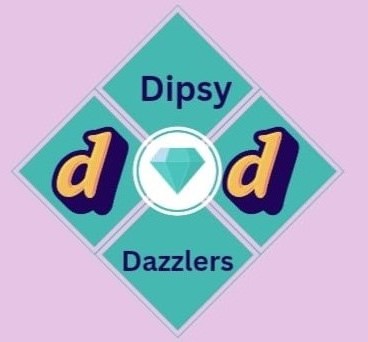
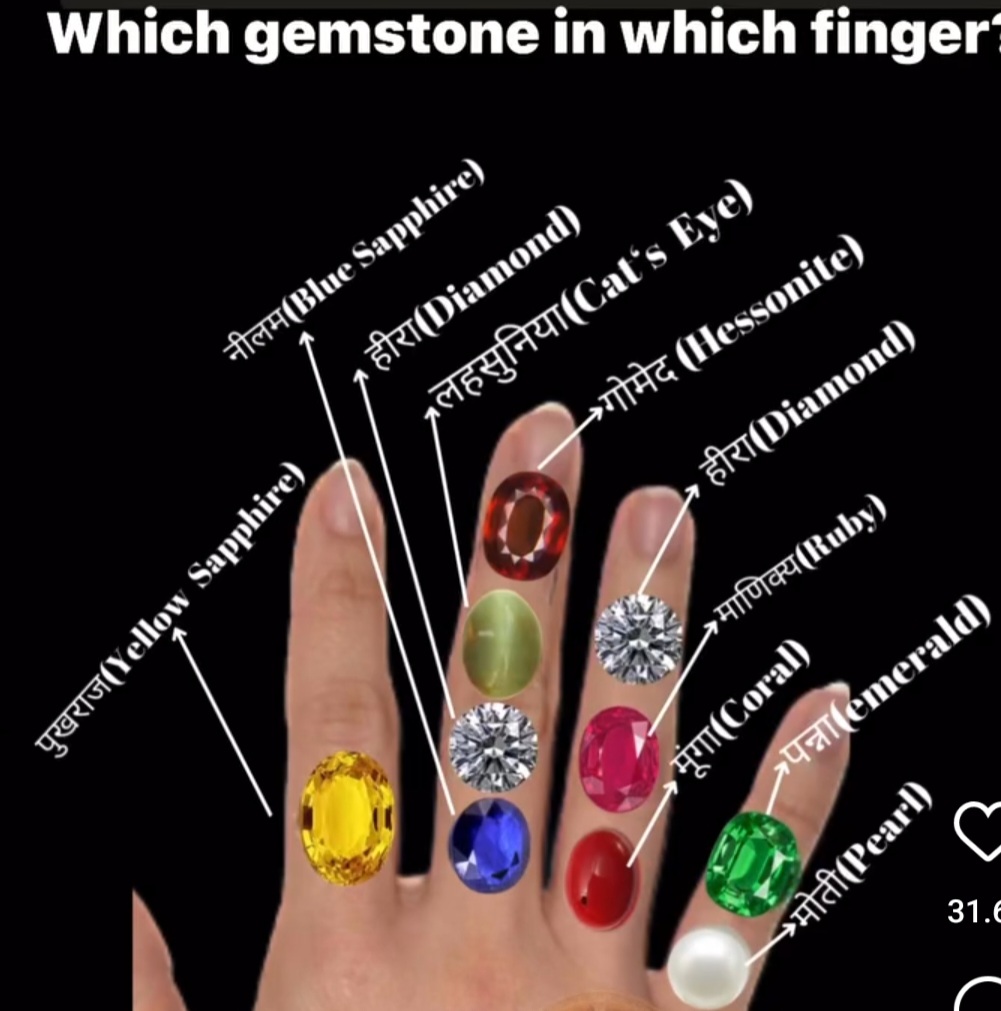
1 Carat = 1.09 Ratti
1 Ratti = 0 .91Carat
1 Carat = . 20 Grams
1 Carat = 200 Mgms.
1 gm = 5 Carat
1 gm = 5.49 Ratti
1 Ratti = 0.18 Gms.
1 Ratti = 180 Mgms.
ASTROLOGICAL POINT OF VIEW
WHICH FINGER TO WEAR/ WHO CAN WEAR
DIAMOND STRUCTURE/DENSITY
THE ASTROLOGICAL BENEFITS OF WEARING DIAMONDS:
Beyond the aesthetic appeal of diamonds, they hold a significant place in horoscope, believed to possess potent energies that can influence various aspects of successful life. The actual astrological benefits of wearing diamonds, exploring their connection to planetary forces, their effects on different zodiac signs, and the specific ways they are thought to enhance happy living are the aspects of this article.
Diamond and the Venus.
In astrology, diamonds are primarily associated with Venus, the planet of love, beauty, luxury, and creativity. Venus governs relationships, pleasure, comfort, and the finer things in life. Wearing a diamond is believed to enhance the positive influences of Venus in one’s life, fostering harmony, attracting abundance, and promoting overall well-being.
Benefits of Wearing Diamonds
The astrological benefits of wearing diamonds are multifaceted just like diamond itself.
1. Enhancement of Love and Relationships
- Diamonds are considered as useful catalysts for strengthening bonds . They are thought to intensify love, passion, and commitment and thus fostering deeper connections between partners.
- Wearing a diamond can enhance one’s ability to express love and affection, promoting trustworthy communication and considerate in relationships.
- Diamonds can help attract positive romantic endeavours and create a harmonious and fulfilling love life.
2. Attraction of Wealth and Prosperity
- Diamonds have been always associated with wealth and abundance. Using them is believed to attract financial success, prosperity, and material comforts.
- They are considered to enhance one’s ability to achieve financial stability.
- Diamonds can encourage a positive attitude towards money and abundance, fostering a mindset of prosperity.
3. Boosting Confidence and Self-Esteem
- Diamonds are believed to empower with a sense of confidence, strength, and self-worth. Wearing them can help most of the individuals to overcome insecurities and feel more empowered.
- They are thought to enhance personal charisma and attractiveness, ushering more confidence in social interactions.
- Diamonds can promote and encourage self-love, leading to greater overall self reliance when at times needed.
4. Promotion of Emotional Healing and Balance
- Diamonds are thought to foster soothing energies that can help in emotional healing. They can alleviate stress, anxiety, and emotional turmoil.
- Wearing diamonds is believed to promote individuality and balance, helping individuals navigate challenging situations with greater poise.
- They can assist in clearing negative energy and endowing a sense of inner peace and tranquility.
5. Enhancement of Creativity and Artistic Expression
- Diamonds are believed to stimulate creativity and imagination. Using them can enhance artistic inclination and promote self-expression.
- They are considered to inspire alternate ideas and foster innovation in creative pursuits.
- Diamonds can help individuals connect with their inner muse and express their unique talents and boons.
6. Improvement of Physical Health
- In traditional healing practices, diamonds seem to be associated with fortyfying various health benefits. They are believed to energize the heart, brain, and other vital organs.
- Diamonds are thought to enhance vibrance and promote overall well-being.
- They are sometimes used to allay specific health conditions, though it’s important to note that these beliefs are not scientifically proven.
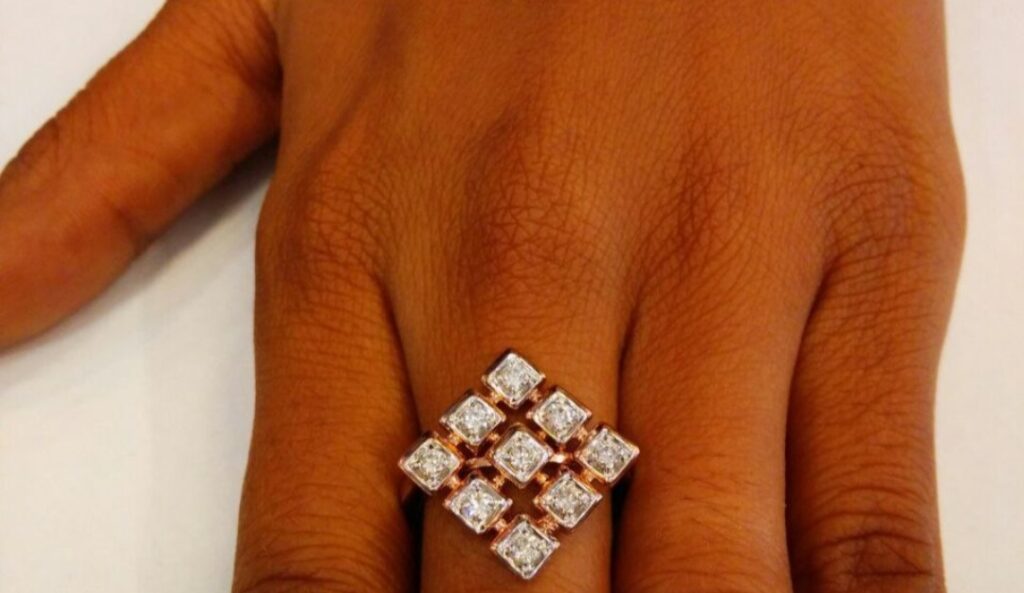
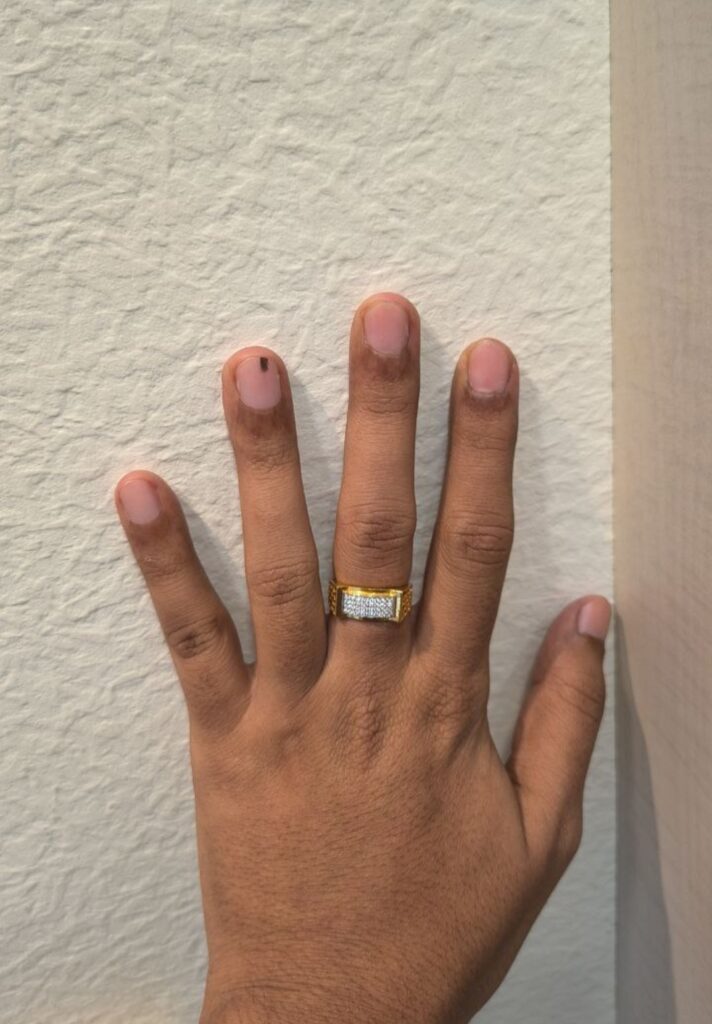
Diamonds and the Zodiac Signs – the benefits of wearing diamonds
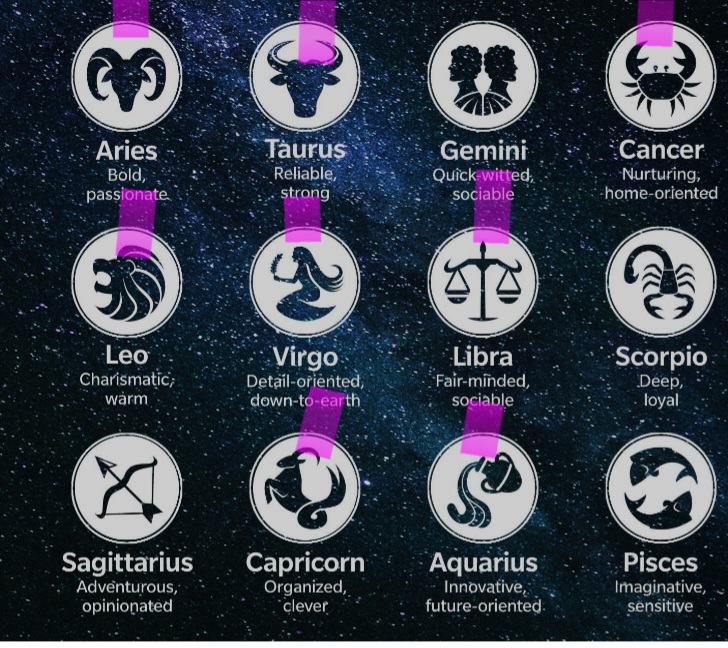
Though diamonds are generally considered beneficial for almost everyone, certain zodiac signs are believed to have a particularly strong affinity with this gemstone:
- Aries: Diamonds can help temper the fiery nature of Aries, promoting balance, patience, and emotional stability. They can also enhance their leadership qualities and attract success.
- Taurus and Libra: These signs are ruled by Venus, making them especially receptive to the energies of diamonds. Wearing diamonds can enhance their natural charm, attract love and abundance, and promote overall harmony.
- Cancer: Diamonds can provide emotional support and stability for Cancerians, who are often sensitive and nurturing. They can also enhance their intuition and creativity.
- Leo: Diamonds can amplify the regal aura of Leos, enhancing their confidence, charisma, and leadership abilities. They can also attract admiration and success.
- Virgo: Diamonds can help Virgos connect with their sensual side, promoting self-love, and enhancing their creativity.
- Capricorn: Diamonds can bring structure and discipline to the lives of Capricorns, helping them achieve their goals with greater focus and determination. They can also attract wealth and success.
- Aquarius: Diamonds can enhance the innovative and visionary nature of Aquarians, promoting clarity of thought and effective communication.
How to Wear Diamonds for Astrological Benefits
To maximize the astrological benefits of wearing diamonds, consider the following guidelines:
- Quality Matters: The quality of the diamond is very important. Choose for a natural, high-quality diamond with good clarity, cut, and color. Go for certification as well which is imp. and the 5th C.
- Metal Setting: The metal in which the diamond is set can also influence its effects. Gold and platinum are often recommended as they are considered to enhance the diamond’s energy.
- Finger Placement: Traditionally, diamonds are worn on the ring finger of the left hand. However, an astrologer can provide personalized guidance based on your birth chart.
- Cleansing and Energizing: Before wearing a diamond for astrological purposes, it is often recommended to cleanse and energize it. This can be done by immersing the diamond in saltwater or placing it under moonlight.
- Auspicious Timing: Wearing a diamond for the first time on an auspicious day or during a favorable planetary alignment is believed to enhance its effects. Consulting an astrologer can help determine the most suitable time.
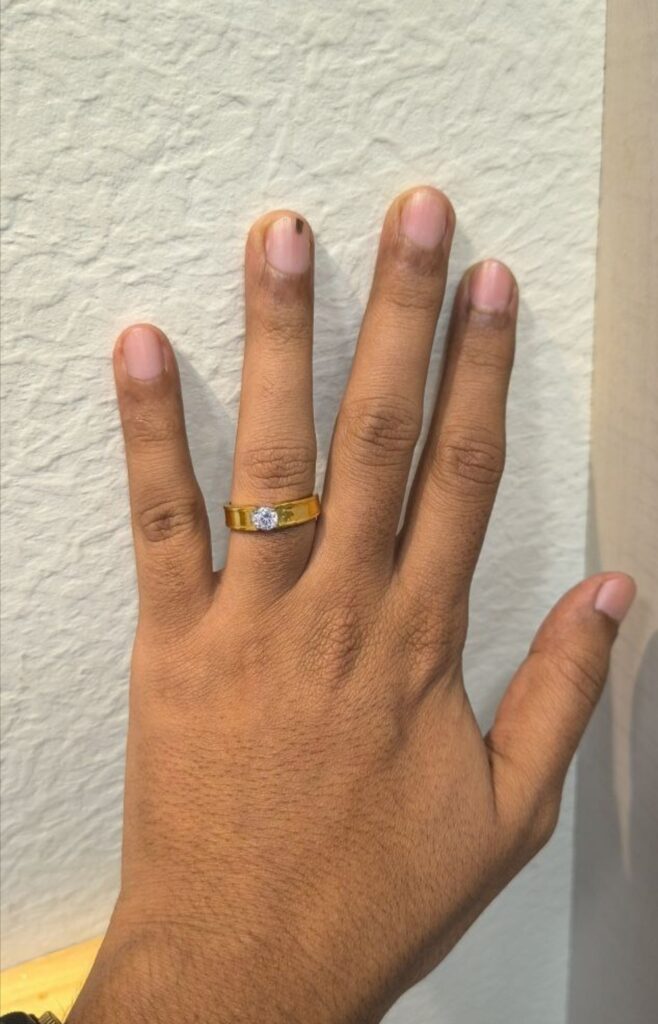
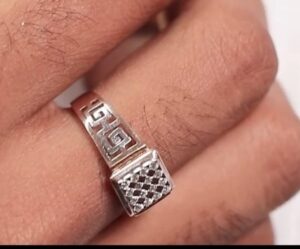
Caution and Considerations
While diamonds are generally considered beneficial, it’s essential to exercise caution and consider the following:
- Consult an Astrologer: It is always advisable to consult a knowledgeable astrologer before wearing a diamond for astrological purposes. They can analyze your birth chart and determine if a diamond is suitable for you and recommend the best way to wear it.
- Unsuitable Placements: In some cases, wearing a diamond may not be beneficial or may even have negative effects if Venus is unfavorably positioned in one’s birth chart.
- Ethical Sourcing: Ensure that the diamond you choose is ethically sourced and conflict-free.
DIAMOND STRUCTURE/DENSITY.
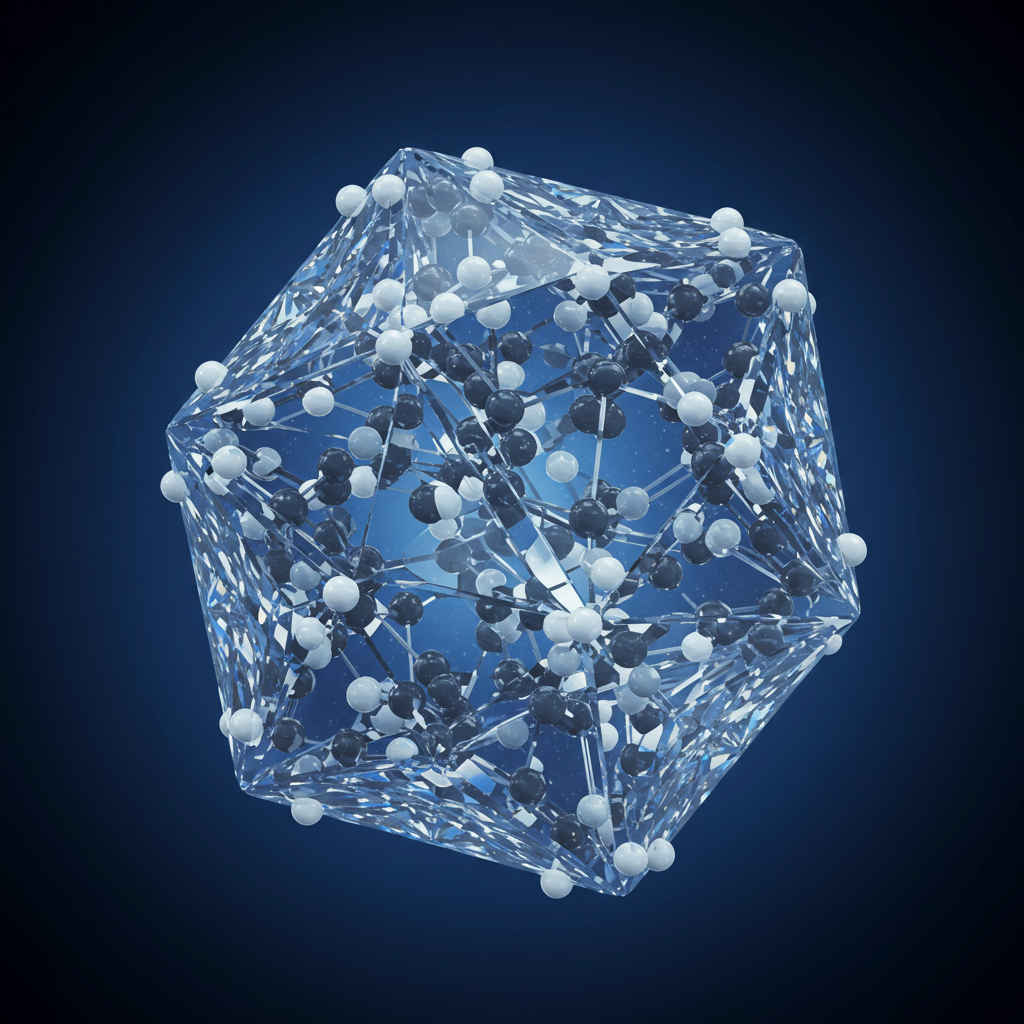
Diamond structure is a TETRAHEDRAL NETWORK which boasts of a unique and highly symmetrical crystal structure. This attributes to its exceptional physical properties including its remarkable hardness and relatively high density. It is a well known allotrope of CARBON.
At the core, the diamond structure is a face centered cubic lattice(FCC) , basically carbon atoms associated with each lattice point. In this FCC arrangement the carbon atoms are located at each of the eight corners and the center of each of the six faces of the cube. Now a second identical FCC lattice interpenetrating the first, shifted along one of the body diagonals of the cube by one-quarter of its length. This interpenetration creates the characteristic diamond cubic lattice.
UNDERSTANDING DIAMOND DENSITY AND STRUCTURE
Diamonds are not just prized for their brilliance and rarity—they are also fascinating from a scientific perspective. Their value lies in their unique physical and chemical properties, particularly density and cubic crystal structure. These two factors not only make diamonds harder than any other natural substance but also help in identifying real diamonds from imitations.
This article explores in depth what diamond density and cubic structure mean, how they form, and how they are useful in distinguishing genuine diamonds from synthetic or lookalike stones like moissanite, cubic zirconia, and quartz.
1. What Is Diamond Density?
Density is defined as the mass of a substance per unit volume, usually expressed in grams per cubic centimeter (g/cm³). For diamonds, the density (or specific gravity) is approximately 3.52 g/cm³. This value is relatively high and consistent across all natural diamonds.
How Is Diamond Density Measured?
To determine a diamond’s density:
The stone is first weighed in air.
It is then weighed in water.
Using Archimedes’ principle, the displacement of water helps calculate the volume.
The formula used is:
Density = Mass / Volume
This density is an essential identifier because it’s difficult to replicate exactly in most synthetic or fake stones.
2. What Is a Cubic Crystal Structure?
Diamonds are formed entirely from carbon atoms arranged in a very specific three-dimensional cubic (isometric) crystal structure. In this arrangement:
Each carbon atom is bonded to four other carbon atoms.
These bonds form a tetrahedral geometry, repeated throughout the structure.
This arrangement is called a face-centered cubic lattice (FCC) or diamond cubic.
Why Does This Matter?
This symmetrical, tightly bonded structure:
Is what gives diamond its incredible hardness (10 on the Mohs scale).
Contributes to its high refractive index (2.42), which produces brilliance and sparkle.
Influences the way diamonds cleave or fracture when cut.
It also makes diamonds anisotropic, meaning they exhibit different properties in different directions within the crystal.
3. How Density and Structure Affect Appearance
Because of the cubic structure:
Light entering the diamond undergoes total internal reflection.
This internal bounce, combined with the high refractive index, results in exceptional fire and brilliance.
The even symmetry ensures that well-cut diamonds have perfect symmetry and facet alignment.
In contrast, gemstones with hexagonal or tetragonal structures will reflect and refract light differently, often appearing dull or oily in comparison.
4. Comparing Diamond Density with Other Gemstones
Gemstone Density (g/cm³) Crystal System
Diamond 3.52 Cubic (isometric)
Moissanite 3.22 Hexagonal
Cubic Zirconia (CZ) 5.65 – 5.95 Cubic
Quartz 2.65 Trigonal
Sapphire 4.00 Hexagonal
Spinel 3.58 – 3.61 Cubic
From this table, you can see:
Cubic zirconia has a higher density than diamonds, making it feel heavier.
Quartz is lighter and lacks both the density and structure of diamond.
Moissanite, while visually similar, has a lower density and a different crystal system.
These differences are exploited in gemstone testing and authentication.
5. How Cubic Structure Influences Diamond Cutting
The cubic nature of diamonds guides gem cutters:
Diamonds have cleavage planes parallel to the crystal faces. Cutting along these planes reduces the risk of breakage.
Shapes like round brilliants, cushions, and emerald cuts are designed to maximize light return within this cubic geometry.
Incorrect cutting angles can compromise brilliance because light escapes instead of reflecting internally.
Thus, understanding the cubic structure helps maximize a diamond’s optical performance.
6. Use of Density and Structure in Diamond Identification
Methods Used:
Hydrostatic Weighing: Determines specific gravity to differentiate diamond from similar-looking stones.
Refractive Index Testing: Diamonds’ cubic structure gives them a fixed high refractive index.
Polariscope and Crossed Filters: Diamonds are singly refractive due to their cubic system. Many fakes are doubly refractive.
UV Fluorescence: Not directly related to density but combined with structural tests, it provides stronger authentication.
In gem labs, high-precision instruments also analyze lattice spacing and symmetry to confirm if a stone is a natural diamond or a synthetic.
7. Synthetic Diamonds and Structure
Lab-grown diamonds have the same density and cubic structure as natural diamonds because they are made from carbon under high pressure and temperature (HPHT) or via chemical vapor deposition (CVD).
However, subtle differences in growth patterns, inclusions, or trace elements can help experts tell them apart.
For example:
HPHT diamonds might show metallic inclusions.
CVD diamonds may exhibit growth striations or specific fluorescence patterns under UV.
Despite these differences, the fundamental density and crystal structure remain indistinguishable without advanced lab equipment.
8. Why Density and Structure Make Diamonds Unique
Diamonds are the only gemstone composed entirely of one element—carbon—arranged in the most efficient and tightest crystalline structure known in nature. This gives them a unique combination of properties:
Highest hardness
High luster
Exceptional dispersion
Stability over time
Other gemstones may match one or two of these characteristics but not all.
This uniqueness reinforces why diamonds are so highly valued—both scientifically and sentimentally.
9. Quick Facts and Takeaways
Density of diamond: ~3.52 g/cm³Crystal structure: Cubic (isometric), face-centered
Hardness: 10 on Mohs scale
Refractive index: 2.42
Diamonds are singly refractive, unlike many simulants.
Cubic structure leads to symmetrical brilliance and predictable cleavage.
